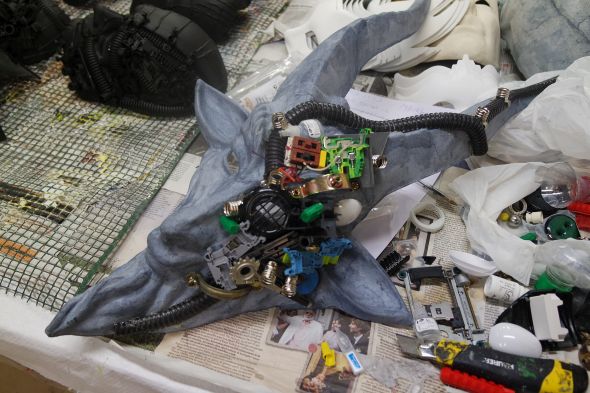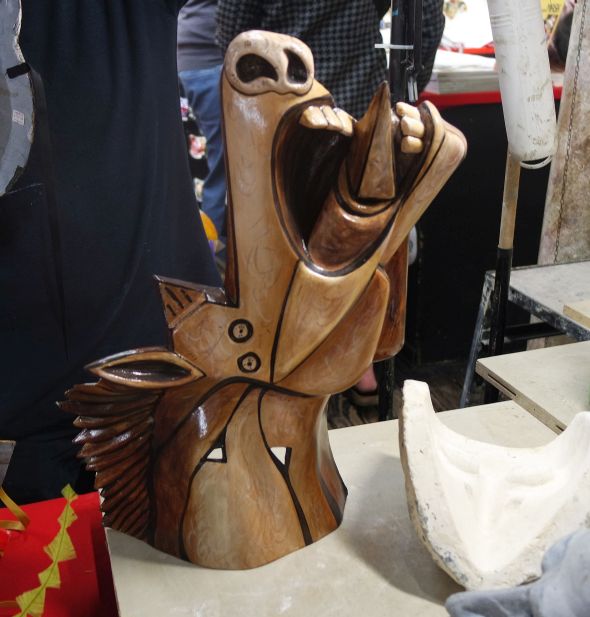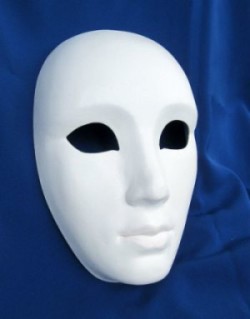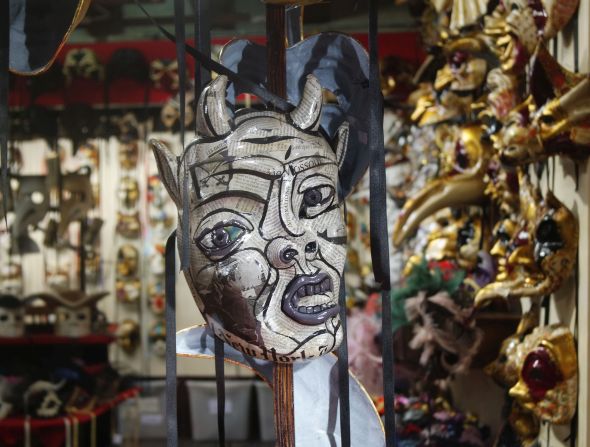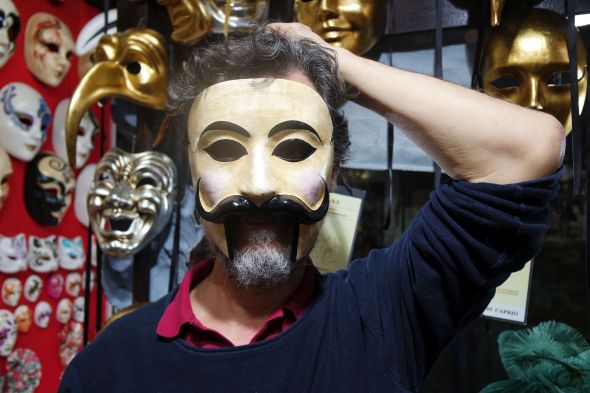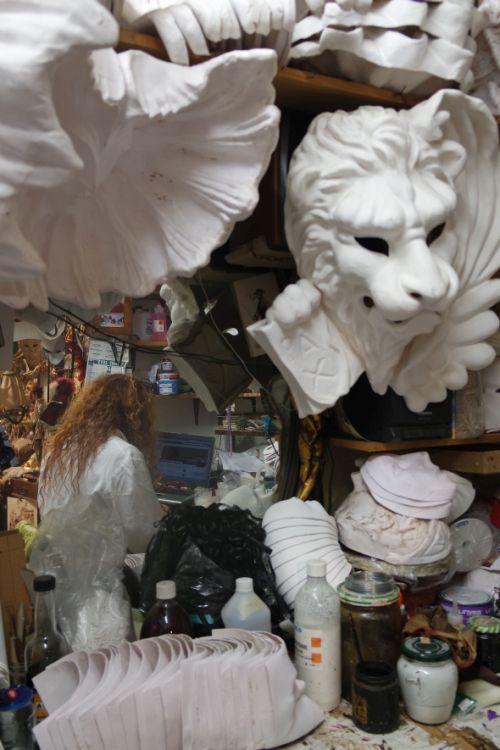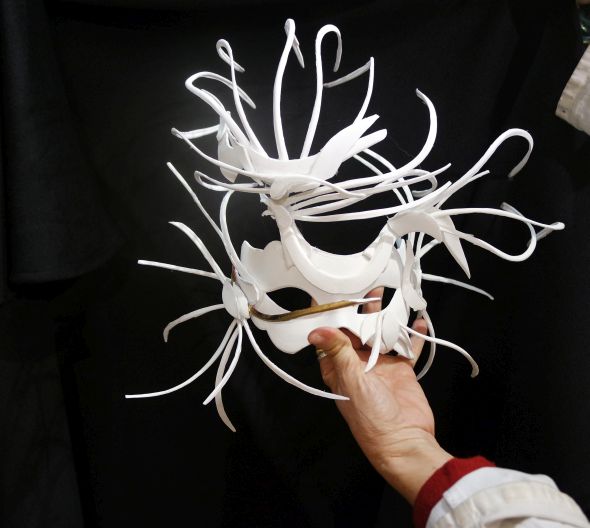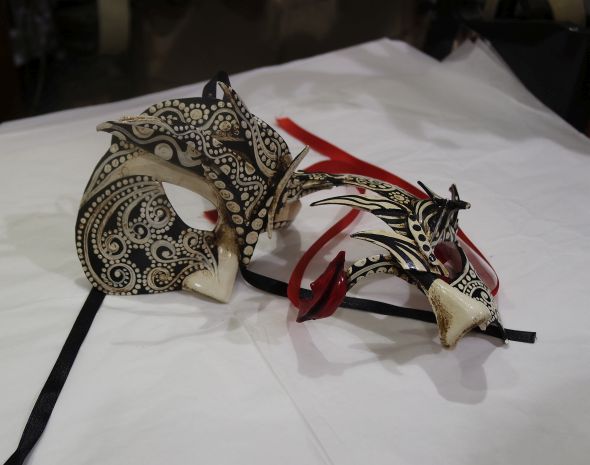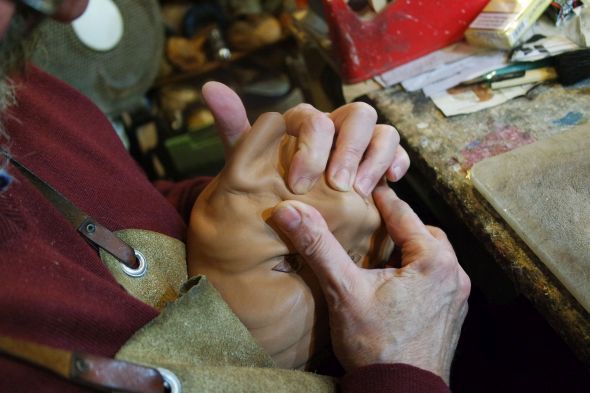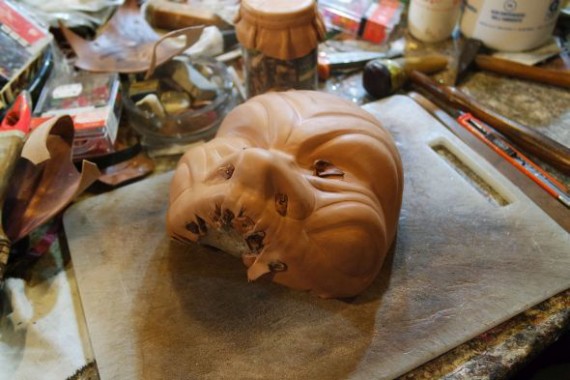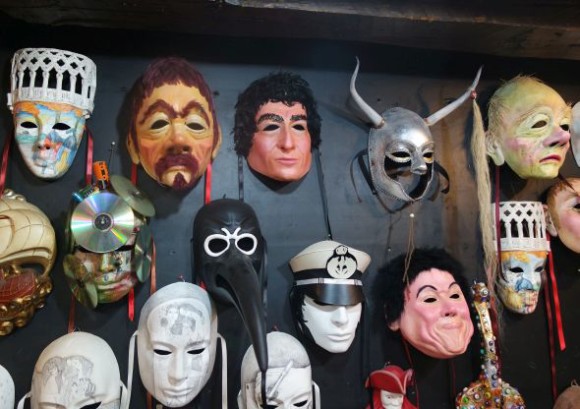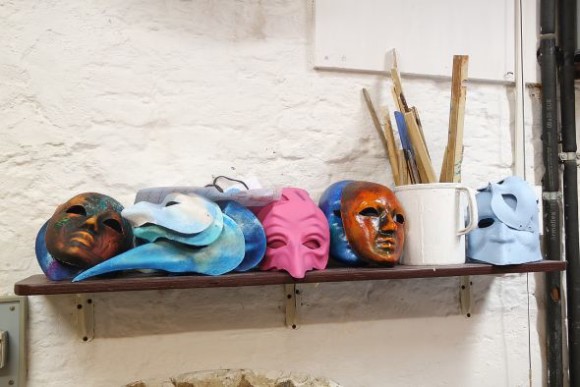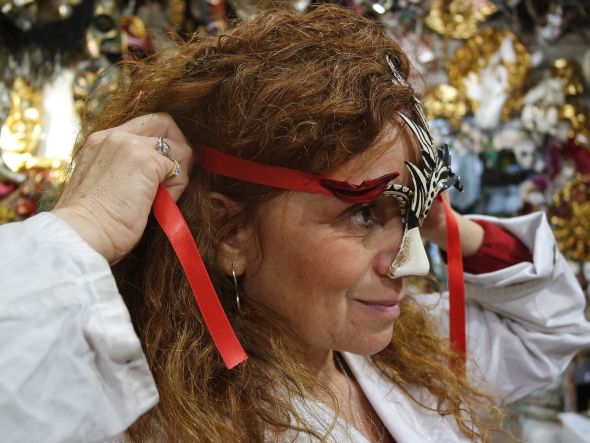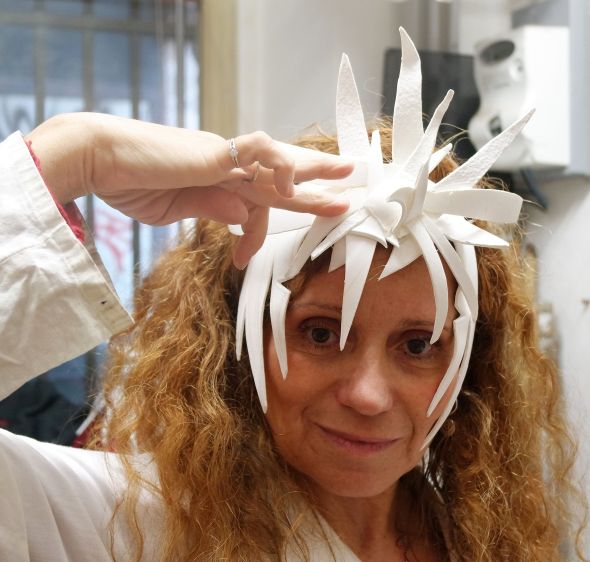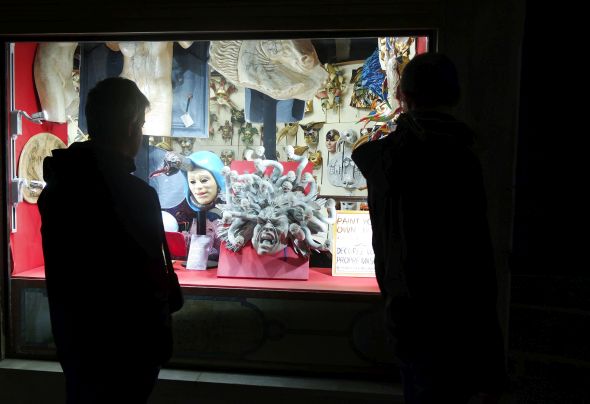
Now it can be told: My absence from my blog has been almost completely due to my presence elsewhere, viz., the world of Venetian masks. Specifically, those who make them. Well, some of those who make them — it wasn’t easy narrowing the field down to four. All this was for “Craftsmanship” magazine’s winter issue.
Certain chunks of time during that period were co-opted by the incessant unpredictables of daily life: Finding a dentist and replacing a large filling which fell out of a molar; replacing the hot-water heater in our little hovel, which is located in a closet literally three steps from my computer; renewing my passport (half a day, what with getting to and from the airport where the consulate is located); opening a new bank account because of new American laws I won’t bore you with. And so on. Charlotte Bronte and George Sand and Harriet Beecher Stowe never had to put up with all this because they had servants, for which I will never forgive them.
Back to work: From sometime far back in October till three days ago, I was researching, interviewing, and probing the depths of maskdom (history of, reason for, artisans therefrom, techniques, materials, anecdotes, etc.). As usual, I overdid it, which meant that the pressure of the final phases (writing, rewriting, rewriting and rewriting) made my brain feel like a decaying swamp plant being turned into a diamond. The pressure was there, anyway, I can attest to that.
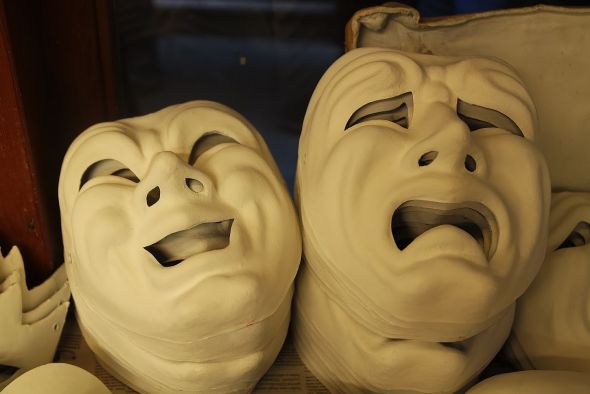
I learned several very interesting things about masks in the process, but two things stand out, and I want you to remember them: First, the best mask-makers are constantly trying new ideas and designs, and second, they do it even though they know the mask probably won’t ever sell. That statement is worth pondering.
I have pondered the one with pleasure and the other with regret, because if you were to judge the range of masks on sale in Venice by looking at what people are wearing out on the street during Carnival, you would conclude that there are about five designs. At most. One of many reasons why I regard Carnival as one of the dullest and most stultifying intervals in the Venetian year is precisely because of the freaking monotony and lack of imagination in the costumes and masks. I can dimly understand the appeal of disguising yourself. But I cannot understand the appeal of disguising yourself to look exactly like hundreds of other disguised people. At what point does the concept of “disguise” fail and become merely “normal”?
So here are some photographs of some masks that are sitting right there in shops (or about to be), and I’d like you to give them some respect because they’re quite likely to stay in the shops. Why? I hear you cry. Because people don’t want to spend money for an original work of art they can also tie onto their head.
If for some reason you want to spend the money but inconveniently don’t have it on you at the moment, at least do something different! You don’t have to be an artist to break out of the mold. You could buy a cheap white mask and stick crumpled-up chewing-gum wrappers on it and spray it with glitter. You could throw the wrappers away and stick the gum directly on it. You could take some Sharpie pens in different colors and write the story of your life all over it. You could make a tunic out of newspaper and wander around blowing a kazoo and yelling “Hear Ye, Hear Ye” and announcing whatever invented headlines you really wish were true. You could do a lot, if you start to think about it.
Here is the link to the story, and I am indulging myself bv adding some photographs that didn’t make it into the story, particularly some masks that are as unlike what you see on the street as mulch is from creme fraiche.
http://craftsmanship.net/the-high-art-of-the-mask/
